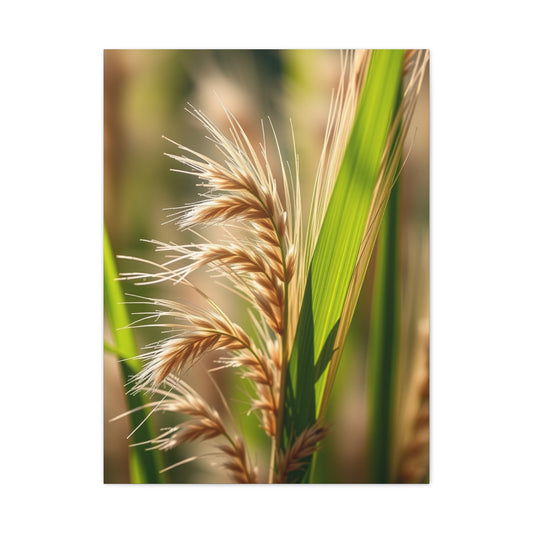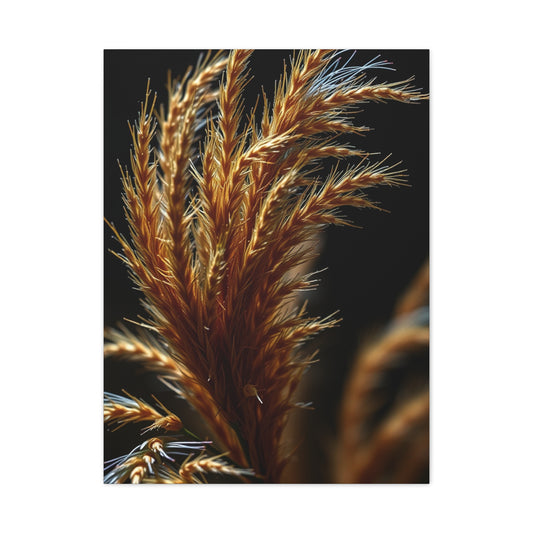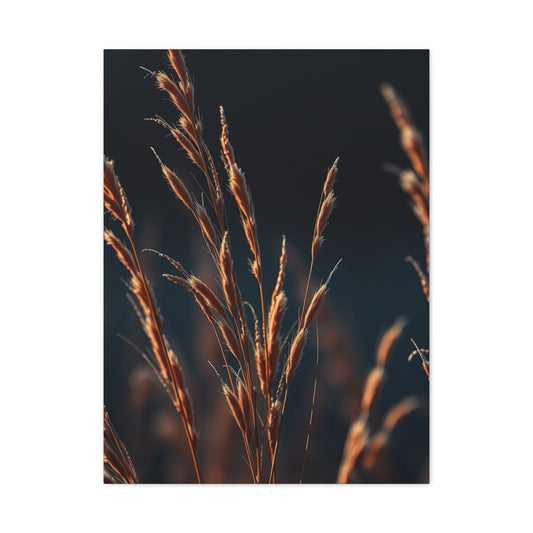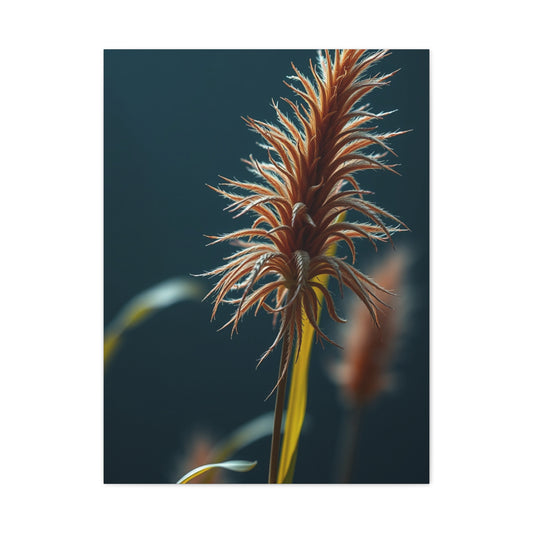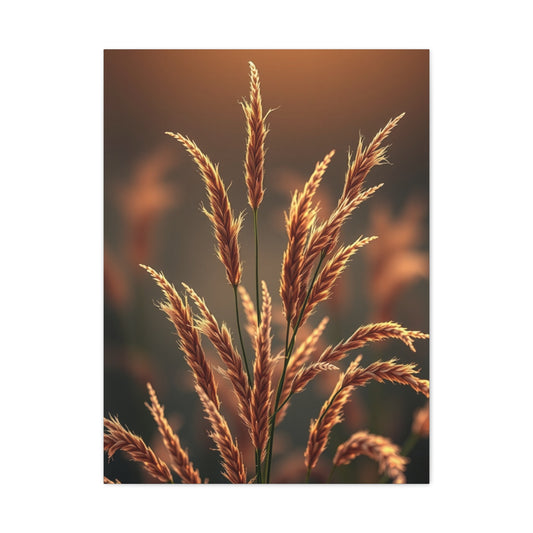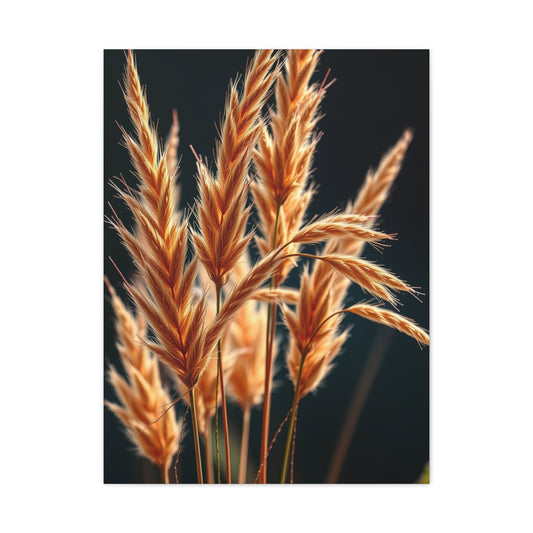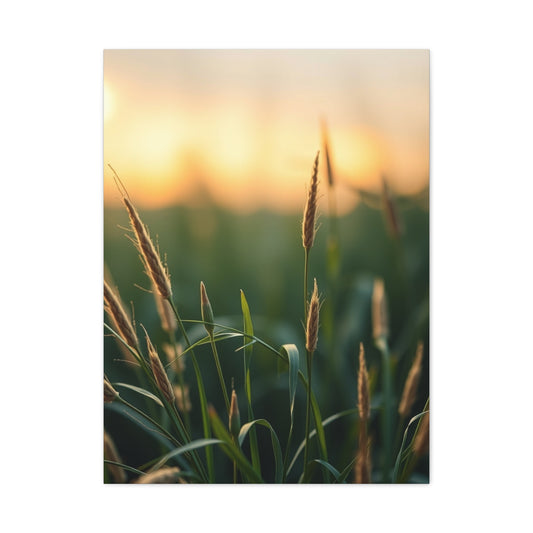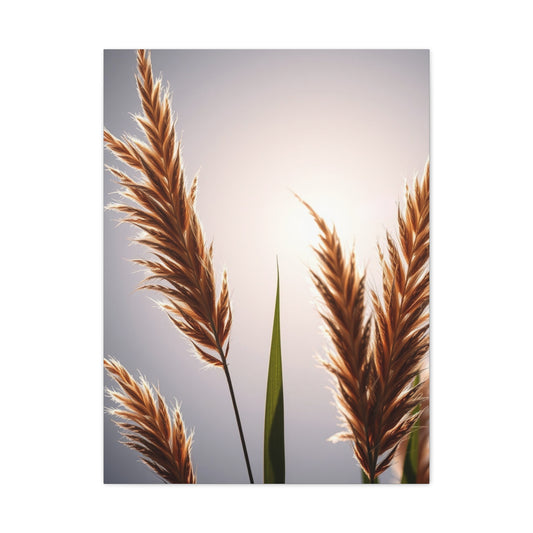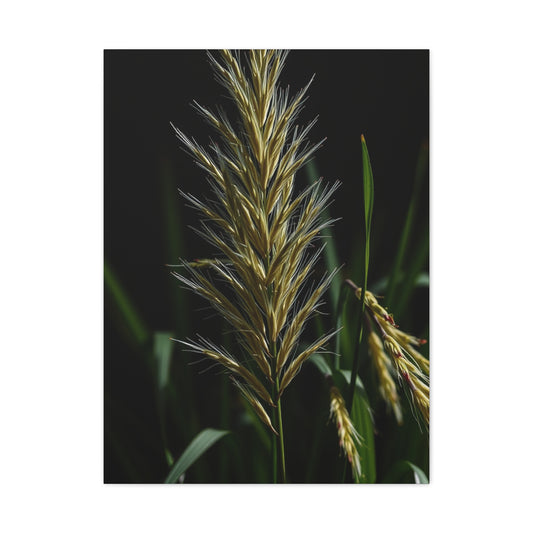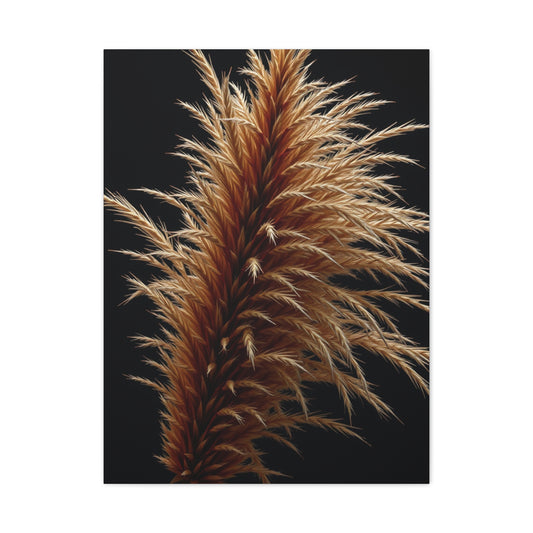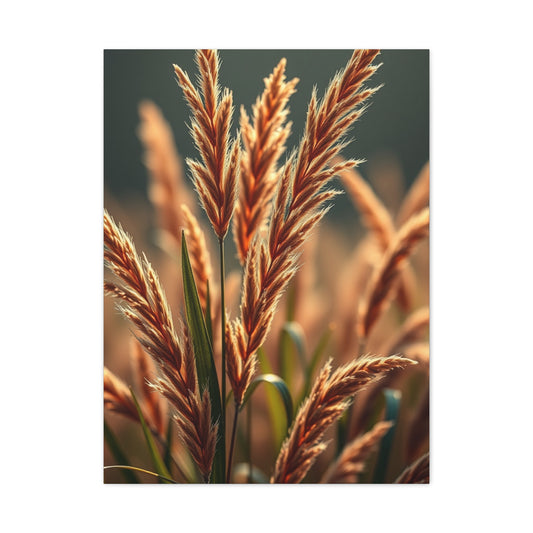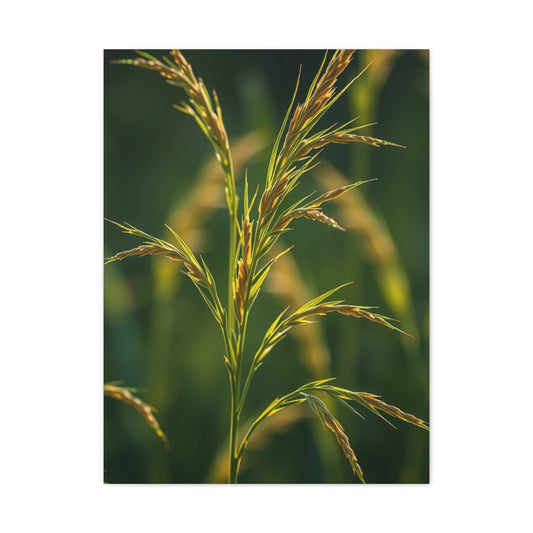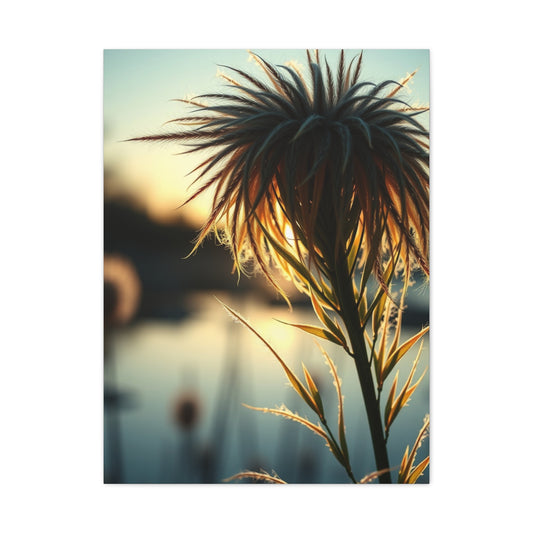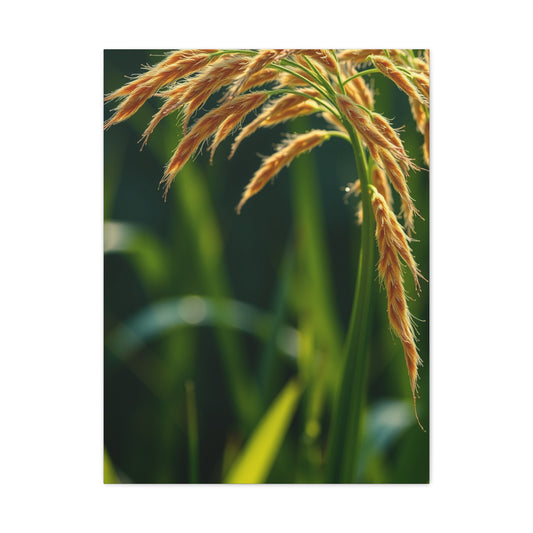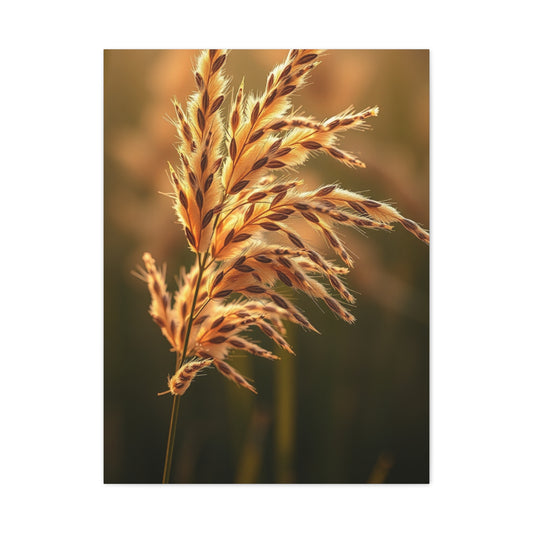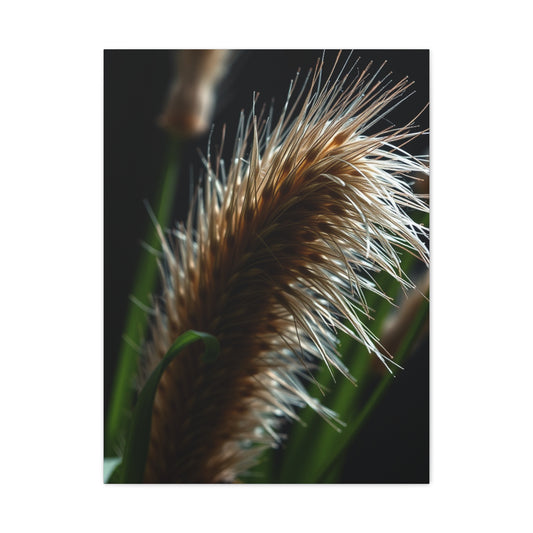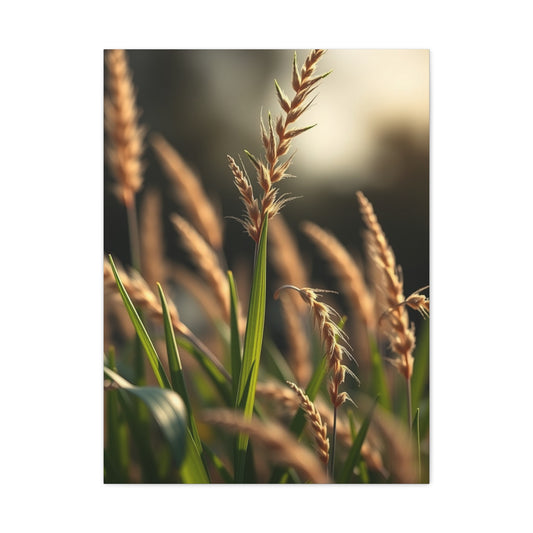High on Style: Weed Wall Art Trends You Need to Know
Cannabis-themed decorative pieces have evolved from underground subculture symbols to mainstream artistic expressions that grace contemporary homes worldwide. The realm of weed wall art encompasses a vast spectrum of visual representations, from subtle botanical illustrations to bold statement pieces that celebrate the aesthetic beauty of marijuana plants. This comprehensive exploration delves into every aspect of cannabis-inspired home decoration, offering insights into styles, creation methods, placement strategies, and cultural significance.
The journey into weed wall art begins with understanding its multifaceted nature. These decorative elements serve not merely as visual accessories but as expressions of personal identity, lifestyle choices, and artistic appreciation. Whether displayed in private sanctuaries or public spaces, cannabis-themed artwork has transcended its controversial origins to become a legitimate form of contemporary art.
Cannabis-Themed Artistic Expression
The transformation of marijuana imagery from taboo subject matter to celebrated artistic motif represents a significant cultural shift. During the prohibition era, cannabis symbols existed primarily within counterculture movements, hidden from mainstream society. Underground artists created clandestine pieces that served as coded communications among like-minded individuals, fostering a sense of community and shared identity.
Contemporary cannabis art draws inspiration from various sources, including botanical accuracy, abstract interpretations, psychedelic influences, and minimalist aesthetics. Artists now approach marijuana subjects with the same respect and attention afforded to any other botanical subject, recognizing the plant's inherent beauty and complex structure.
The legalization movement has profoundly impacted artistic expression, liberating creators from the constraints of underground culture. This freedom has resulted in sophisticated artwork that challenges preconceptions and elevates cannabis imagery to new artistic heights. Museums and galleries now feature cannabis-themed exhibitions, acknowledging the cultural significance and artistic merit of these works.
Street art and graffiti culture have played pivotal roles in shaping cannabis artistic expression. Urban artists have long incorporated marijuana leaves and related imagery into murals, contributing to the normalization and acceptance of these symbols. This grassroots movement has influenced contemporary artists who continue to draw inspiration from street art aesthetics.
Digital art platforms have revolutionized cannabis artistic expression, providing unprecedented access to creation tools and distribution channels. Artists can now experiment with various digital mediums, creating intricate designs that would be impossible through traditional methods. This democratization of artistic creation has led to an explosion of creative content and diverse artistic voices.
Botanical Accuracy in Cannabis Artwork
Scientific illustration traditions heavily influence contemporary weed wall art, with artists striving for botanical accuracy while maintaining aesthetic appeal. Understanding marijuana plant anatomy becomes crucial for creating authentic representations that resonate with knowledgeable audiences. The distinctive serrated leaves, complex flower structures, and intricate trichome patterns provide rich subject matter for detailed artwork.
Professional botanical artists employ various techniques to capture the essence of cannabis plants. Watercolor paintings showcase the delicate nature of leaves and flowers, while detailed pen-and-ink drawings emphasize structural complexity. Photography-based artwork captures microscopic details invisible to the naked eye, revealing the plant's hidden beauty.
Color accuracy plays a vital role in botanical cannabis art. Artists must understand the subtle variations in green tones, from the deep emerald of mature leaves to the pale lime of new growth. Flowering phases introduce additional color complexities, with pistils ranging from white to deep orange, and trichomes creating silvery, crystalline surfaces.
Seasonal variations provide diverse inspiration for cannabis artwork. Artists document the complete lifecycle, from seedling emergence through harvest, creating comprehensive visual narratives. These series often become educational tools, combining artistic beauty with scientific accuracy.
The intersection of art and horticulture has produced collaborative works between artists and cultivators. These partnerships ensure botanical accuracy while pushing creative boundaries, resulting in artwork that satisfies both scientific rigor and aesthetic demands.
Abstract and Stylized Interpretations
While botanical accuracy appeals to certain audiences, abstract interpretations offer limitless creative possibilities. Artists deconstruct recognizable cannabis imagery, reducing complex forms to essential elements. These stylized approaches make cannabis art accessible to broader audiences while maintaining symbolic significance.
Geometric interpretations transform organic cannabis shapes into angular, structured compositions. These works often incorporate sacred geometry principles, suggesting deeper spiritual connections with the plant. Mathematical precision contrasts with organic irregularity, creating visually compelling tensions.
Minimalist approaches distill cannabis imagery to its most essential elements. Simple line drawings capture the plant's essence without overwhelming detail. These sparse compositions rely on viewer recognition and interpretation, creating participatory art experiences.
Color field paintings use cannabis-inspired palettes without explicit plant imagery. Deep greens, earthy browns, and vibrant flower colors evoke cannabis associations through color psychology. These subtle references allow viewers to project personal interpretations onto abstract compositions.
Surrealist influences appear in dream-like cannabis imagery that defies natural laws. Plants might grow in impossible configurations or merge with unrelated objects, creating fantastical compositions that explore the plant's symbolic rather than literal significance.
Psychedelic and Visionary Aesthetics
The historical connection between cannabis use and psychedelic experiences has profoundly influenced artistic representation. Visionary artists create elaborate compositions that attempt to visualize altered states of consciousness, often incorporating cannabis imagery as central elements.
Fractal patterns appear frequently in psychedelic cannabis art, reflecting the recursive, self-similar structures observed during altered states. These mathematical patterns create infinite complexity within finite spaces, mirroring the perceptual expansions associated with cannabis experiences.
Vibrant color palettes characterize psychedelic cannabis art, with artists employing fluorescent and day-glo pigments that seem to pulse with energy. These intense colors create visual excitement and capture the heightened sensory experiences reported by cannabis users.
Mandala structures provide organizational frameworks for complex cannabis imagery. These circular, symmetrical compositions create focal points for meditation and contemplation, reflecting the spiritual aspects often associated with cannabis use.
Optical illusions and visual tricks engage viewers in active perception, creating artwork that changes based on viewing distance and angle. These dynamic pieces mirror the perceptual shifts experienced during altered states, making static images appear to move and breathe.
Cultural and Symbolic Representations
Cannabis imagery carries deep cultural significance across various traditions and societies. Artists explore these symbolic meanings, creating works that transcend mere botanical representation to engage with broader cultural narratives.
Rastafarian influences appear in cannabis art that incorporates religious symbolism, Ethiopian colors, and references to Jah. These works respect and celebrate the spiritual significance of marijuana within Rastafarian tradition, creating art that serves devotional as well as decorative purposes.
Native American traditions provide another source of cultural inspiration, with artists exploring the sacred plant relationships common in indigenous cultures. These works often incorporate traditional design elements and color palettes, creating respectful homages to indigenous plant wisdom.
Hindu and Buddhist influences appear in cannabis art that references the plant's historical use in religious contexts. Lotus flowers, om symbols, and other sacred imagery merge with cannabis elements, creating spiritually meaningful compositions.
Contemporary urban culture contributes hip-hop influenced aesthetics, graffiti-style lettering, and street art sensibilities. These works reflect cannabis culture's evolution within modern urban environments, celebrating the plant's role in contemporary music and lifestyle.
Photographic Approaches to Cannabis Art
Photography offers unique possibilities for capturing cannabis beauty, from macro details to artistic compositions. Professional photographers have elevated marijuana imagery through sophisticated lighting, composition, and post-processing techniques.
Macro photography reveals the intricate world of cannabis trichomes, revealing crystalline structures invisible to casual observation. These extreme close-ups transform familiar plants into alien landscapes, showcasing nature's microscopic artistry.
Studio photography employs controlled lighting to create dramatic cannabis portraits. Professional lighting equipment highlights texture, form, and color while eliminating distracting elements. These controlled environments allow photographers to create idealized plant representations.
Black and white photography strips away color distractions, focusing attention on form, texture, and composition. Monochromatic cannabis images often achieve timeless quality, resembling classic botanical studies or artistic portraits.
Environmental photography places cannabis plants within natural or constructed settings, creating narrative contexts. These images might show plants in outdoor growing environments or carefully arranged indoor settings that suggest lifestyle and culture.
Time-lapse photography captures cannabis growth cycles, compressing months of development into short sequences. These dynamic images reveal the plant's temporal beauty, showing the graceful movements of growth and development.
Digital Art and Modern Techniques
Digital creation tools have revolutionized cannabis artistic expression, enabling artists to achieve effects impossible through traditional media. Software applications provide unprecedented control over color, texture, and composition while offering unlimited experimentation possibilities.
Vector graphics create scalable cannabis imagery perfect for large-format printing. These mathematical illustrations maintain crisp edges at any size, making them ideal for wall art applications. Vector techniques also enable easy color modification and style variations.
Digital painting combines traditional artistic techniques with computer precision. Artists can achieve photorealistic effects or stylized interpretations with equal facility. Layering capabilities allow complex compositions that would be extremely difficult using traditional media.
3D modeling and rendering create realistic cannabis imagery from virtual plants. These techniques enable impossible viewpoints and lighting conditions while maintaining photographic realism. Artists can create idealized plants that surpass natural specimens in perfection.
Mixed media approaches combine digital and traditional techniques, scanning hand-drawn elements for digital manipulation. These hybrid methods preserve organic qualities while benefiting from digital flexibility and precision.
Generative art algorithms create unique cannabis imagery through programmed rules and random elements. These automated systems produce variations that human artists might never conceive, expanding creative possibilities through machine collaboration.
Print Media and Reproduction Methods
High-quality reproduction ensures that weed wall art maintains its visual impact when transferred from original to final display format. Understanding various printing technologies helps artists and consumers make informed choices about reproduction methods.
Giclée printing represents the gold standard for fine art reproduction, using archival inks and papers that ensure longevity. These museum-quality prints capture subtle color variations and fine details, making them suitable for serious collectors and gallery display.
Canvas printing creates textured surfaces that mimic traditional paintings. Digital images printed on canvas gain dimensional quality and reduced glare, making them appropriate for various lighting conditions. Canvas prints also offer size flexibility not available with paper prints.
Metal printing creates contemporary, high-gloss finishes that emphasize color saturation and contrast. Aluminum substrates provide durability and unique aesthetic qualities, particularly suitable for modern, industrial decor styles.
Acrylic printing produces vibrant, dimensional pieces with substantial visual impact. Images printed on clear acrylic appear to float away from walls, creating striking visual effects. These prints offer excellent color saturation and contemporary appeal.
Traditional paper printing remains relevant for certain artistic styles, particularly those referencing historical botanical illustrations. High-quality paper stocks can enhance artwork's authentic feel while providing cost-effective reproduction options.
Framing and Presentation Considerations
Proper framing protects artwork while enhancing its visual impact. Cannabis art requires careful consideration of frame styles, matting, and glazing to achieve optimal presentation results.
Contemporary frame styles often work best with modern cannabis art, providing clean lines that don't compete with artwork content. Minimalist frames allow art to take center stage while providing necessary protection and structure.
Traditional frames might suit botanical-style cannabis artwork that references historical illustration traditions. Ornate frames can enhance the perceived value and artistic legitimacy of cannabis imagery, particularly in formal settings.
Matting creates visual breathing space around artwork while protecting it from direct frame contact. Neutral mat colors generally work best, though colored mats can enhance specific color schemes or create dramatic effects.
UV-protective glazing prevents fading and damage from harmful light exposure. This protection becomes particularly important for valuable or irreplaceable pieces. Anti-reflective coatings improve viewing quality under various lighting conditions.
Conservation framing techniques ensure long-term artwork preservation through acid-free materials and proper spacing. These methods prevent deterioration while maintaining aesthetic quality over extended periods.
Size and Scale Considerations
Choosing appropriate sizes for weed wall art requires careful consideration of display space, viewing distance, and visual impact goals. Different sizes serve different purposes and create varying emotional responses.
Large-format pieces create dramatic focal points that command attention and define spaces. These statement pieces work particularly well in spacious areas where their impact won't overwhelm other design elements.
Medium-sized pieces offer versatility for various display contexts. They provide substantial visual presence without dominating spaces, making them suitable for most residential and commercial environments.
Small-format pieces excel in intimate settings or as components of larger gallery walls. These pieces reward close examination and can create personal, contemplative viewing experiences.
Series and multiples allow for complex installations that tell stories or explore themes through multiple related pieces. These arrangements can create rhythm and flow while maintaining thematic coherence.
Proportional relationships between artwork and display walls affect visual balance. Understanding golden ratio principles and other design fundamentals helps achieve pleasing proportional relationships.
Color Theory in Cannabis Artwork
Understanding color relationships enhances both creation and selection of cannabis wall art. Color choices profoundly impact emotional responses and spatial perception, making color theory knowledge valuable for artists and decorators.
Green dominates cannabis imagery, requiring sophisticated understanding of green color relationships. Complementary colors like reds and purples can create visual excitement, while analogous greens create harmonious, peaceful compositions.
Seasonal color variations provide rich palettes for cannabis artwork. Spring greens suggest growth and renewal, while autumn colors evoke harvest and maturity. These seasonal associations can enhance artwork's emotional impact.
Color temperature affects spatial perception, with warm colors advancing and cool colors receding. Strategic color choices can make spaces appear larger or more intimate, depending on desired effects.
Monochromatic color schemes create sophisticated, cohesive compositions using variations of single hues. These limited palettes can appear elegant and refined while maintaining strong visual unity.
Color psychology influences emotional responses to cannabis artwork. Understanding these associations helps artists create desired moods and helps viewers select pieces that support their intended space functions.
Lighting Effects on Cannabis Wall Art
Proper lighting dramatically affects how cannabis wall art appears and impacts its surrounding environment. Understanding lighting principles helps optimize artwork presentation and spatial integration.
Natural light creates dynamic, changing illumination that can enhance artwork throughout the day. However, UV protection becomes crucial to prevent fading and deterioration over time.
LED spotlights offer precise control over artwork illumination while minimizing heat production. These focused light sources can create dramatic effects while protecting artwork from temperature damage.
Track lighting systems provide flexible illumination options that can accommodate changing displays. These systems work particularly well for gallery walls or rotating art collections.
Ambient lighting creates overall space illumination that affects how artwork appears within its context. Balancing ambient and accent lighting ensures artwork integration with overall space design.
Color temperature variations affect how colors appear in cannabis artwork. Warm light enhances reds and oranges, while cool light emphasizes blues and greens, potentially altering artistic intentions.
Room Placement Strategies
Strategic placement maximizes cannabis wall art's impact while ensuring appropriate integration with existing decor. Different rooms offer varying opportunities and challenges for cannabis art display.
Living rooms provide primary social spaces where cannabis art can spark conversations and express personal style. These spaces typically offer wall areas large enough for substantial pieces or gallery wall arrangements.
Bedrooms offer private spaces where more personal or intimate cannabis artwork might be appropriate. These spaces allow for experimental or unconventional pieces that might not suit public areas.
Home offices can benefit from cannabis art that inspires creativity or provides visual interest during work periods. These spaces might accommodate pieces that reference cannabis culture's creative aspects.
Bathrooms present unique challenges and opportunities for cannabis art display. Humidity and temperature variations require special consideration, while intimate viewing distances favor detailed or small-scale pieces.
Kitchen areas might accommodate cannabis art that references culinary aspects of cannabis culture. These functional spaces require practical considerations about cleaning and durability.
Creating Gallery Walls with Cannabis Themes
Gallery walls allow for complex cannabis art arrangements that tell stories or explore themes through multiple pieces. These installations require careful planning to achieve visual coherence and balance.
Thematic coherence unifies gallery wall arrangements through consistent subject matter, color schemes, or artistic styles. Cannabis-themed gallery walls might explore different artistic interpretations of similar subjects or trace the plant's lifecycle through multiple pieces.
Size variation creates visual rhythm and prevents monotony in gallery wall arrangements. Mixing large anchor pieces with smaller supporting works creates dynamic, engaging compositions.
Spacing consistency ensures professional appearance in gallery wall installations. Equal spacing between pieces creates formal, structured appearances, while varied spacing can appear more casual and organic.
Color distribution throughout gallery walls prevents color clustering that might create visual imbalance. Distributing similar colors across the arrangement creates visual flow and unity.
Frame consistency or intentional variation affects gallery wall cohesion. Matching frames create formal unity, while varied frames can add visual interest if carefully coordinated.
Seasonal and Themed Collections
Rotating cannabis art collections allow for fresh visual experiences while accommodating different moods and seasons. These collections can reflect personal growth, seasonal changes, or evolving tastes.
Spring collections might emphasize growth, renewal, and fresh green colors. Artwork depicting young plants or emerging seedlings captures the season's optimistic energy.
Summer collections could feature vibrant, mature plant imagery with lush foliage and abundant growth. These pieces might incorporate brighter colors and more complex compositions reflecting summer's abundance.
Autumn collections naturally focus on harvest themes, incorporating warmer colors and mature plant imagery. These pieces might reference completion, gratitude, and the cycle's culmination.
Winter collections might feature more abstract or minimalist cannabis imagery, reflecting the season's contemplative quality. Monochromatic or limited color palettes suit winter's spare aesthetic.
Holiday-themed collections can incorporate cannabis imagery into seasonal celebrations while maintaining appropriate taste levels. These specialized pieces add personal touches to traditional holiday decorations.
Custom Commission Processes
Commissioning custom cannabis wall art allows for personalized pieces that perfectly match specific spaces and preferences. Understanding commission processes helps ensure successful outcomes for both artists and clients.
Initial consultations establish project parameters, including size requirements, color preferences, style directions, and budget constraints. Clear communication during this phase prevents misunderstandings later in the process.
Concept development involves creating preliminary sketches or mockups that explore different creative directions. Multiple concepts allow clients to make informed choices about final artwork directions.
Revision processes accommodate client feedback while respecting artistic integrity. Clearly defined revision policies prevent unlimited changes that might compromise project timelines or budgets.
Timeline establishment ensures realistic expectations about project completion dates. Complex pieces require substantial time investments, and rushing can compromise final quality.
Payment structures protect both artists and clients through staged payments tied to project milestones. These arrangements provide security while maintaining project momentum.
Caring for Cannabis Artwork
Proper care extends cannabis wall art's lifespan while preserving its visual quality. Different materials and creation methods require specific care approaches to prevent deterioration.
Dust removal requires gentle techniques that won't damage artwork surfaces. Soft brushes or microfiber cloths can remove surface dust without scratching or abrading delicate surfaces.
Humidity control prevents warping, mold growth, and other moisture-related damage. Maintaining stable humidity levels becomes particularly important for paper-based artwork.
Temperature stability prevents expansion and contraction cycles that might cause cracking or other structural damage. Avoiding extreme temperature changes helps preserve artwork integrity.
UV protection prevents fading and photochemical damage from harmful light exposure. UV-filtering glazing or careful placement away from direct sunlight helps preserve colors and materials.
Professional conservation might become necessary for valuable or damaged pieces. Understanding when to seek professional help can prevent further damage and preserve artwork value.
Investment Aspects of Cannabis Art
Cannabis wall art can represent significant investments that might appreciate over time. Understanding market factors helps make informed purchasing decisions while building valuable collections.
Artist reputation strongly influences artwork value, with established artists typically commanding higher prices. Researching artist backgrounds and career trajectories provides insight into potential value appreciation.
Edition sizes affect print values, with limited editions generally more valuable than open editions. Understanding edition numbering and documentation helps assess investment potential.
Condition significantly impacts artwork value, making proper care and conservation crucial for investment pieces. Original condition generally provides better value retention than restored pieces.
Market trends in cannabis art reflect broader cultural acceptance and legal developments. Growing mainstream acceptance might increase demand and values for quality cannabis artwork.
Documentation and provenance establish artwork authenticity and ownership history. Proper documentation becomes increasingly important as market values rise and counterfeiting becomes more profitable.
Cultural Sensitivity and Social Awareness
Displaying cannabis wall art requires awareness of cultural sensitivities and social contexts. Understanding these factors helps make appropriate choices that respect diverse perspectives and situations.
Legal considerations vary by jurisdiction, with some areas maintaining strict cannabis prohibitions. Understanding local laws and regulations helps avoid potential legal complications.
Professional environments might have policies against cannabis-related imagery, making workplace display inappropriate. Understanding professional contexts helps maintain career prospects while expressing personal interests.
Family considerations become important when children or conservative relatives visit. Balancing personal expression with family harmony requires thoughtful artwork selection and placement.
Community standards vary significantly between regions and social groups. Understanding local attitudes helps make appropriate display decisions that maintain positive community relationships.
Cultural appropriation concerns arise when cannabis art incorporates imagery from cultures where marijuana holds sacred significance. Respectful approaches acknowledge these cultural connections without exploitation.
International Perspectives on Cannabis Art
Global cannabis cultures have developed unique artistic traditions that influence contemporary wall art. Understanding these international perspectives enriches appreciation for cannabis art's diversity and depth.
Amsterdam's coffee shop culture has fostered distinctive cannabis art styles that blend Dutch design sensibilities with international influences. These works often feature sophisticated, understated aesthetics that reflect the city's tolerant atmosphere.
California's cannabis culture combines surf and skateboard aesthetics with high-end cultivation practices. Art from this region often features vibrant colors and outdoor lifestyle themes that reflect the state's progressive cannabis policies.
Canadian cannabis art has evolved rapidly since legalization, with artists exploring new creative freedoms while respecting indigenous plant traditions. These works often incorporate maple leaf motifs and other Canadian symbols alongside cannabis imagery.
European cannabis art varies significantly between countries, reflecting different legal statuses and cultural attitudes. Some regions favor subtle, abstract approaches, while others embrace bold, explicit cannabis imagery.
Asian cannabis art faces unique challenges due to strict prohibition laws, resulting in highly coded or abstract representations. Artists in these regions often employ sophisticated symbolism to reference cannabis culture without explicit imagery.
Themes in Cannabis Artwork
Ecological consciousness increasingly influences cannabis wall art, with artists exploring environmental themes related to cannabis cultivation and consumption. These works often address sustainability, conservation, and humanity's relationship with nature.
Outdoor cultivation imagery celebrates natural growing methods while highlighting environmental stewardship. These works might feature cannabis plants thriving in natural settings, emphasizing harmony between human cultivation and natural ecosystems.
Water conservation themes reflect growing awareness of agriculture's environmental impact. Artists might incorporate drought imagery or water cycle references to promote conscious consumption and sustainable growing practices.
Soil health imagery explores the foundational importance of healthy soil for sustainable cannabis cultivation. These works might feature microscopic soil life or root system complexity to highlight unseen environmental connections.
Solar power and renewable energy themes appear in cannabis art that promotes sustainable cultivation methods. These pieces might combine cannabis imagery with solar panels, wind turbines, or other clean energy symbols.
Climate change references acknowledge cannabis cultivation's potential environmental impacts while promoting adaptive strategies. These works might feature changing landscapes or weather patterns affecting cannabis growing regions.
Therapeutic and Medicinal Themes
Medical cannabis imagery has developed its own artistic vocabulary that balances clinical accuracy with aesthetic appeal. These works often serve educational purposes while maintaining visual attractiveness.
Molecular structure artwork transforms cannabis compounds into beautiful geometric compositions. THC, CBD, and other cannabinoid molecules become abstract art pieces that combine scientific accuracy with aesthetic appeal.
Anatomical references show how cannabis compounds interact with human body systems. These educational pieces might feature brain imagery, endocannabinoid system diagrams, or other medical illustrations.
Relief and healing imagery captures cannabis medicine's therapeutic potential through symbolic representations. These works might feature hands, hearts, or other symbols associated with healing and wellness.
Research and laboratory themes acknowledge the scientific foundation of cannabis medicine. Microscope imagery, laboratory equipment, or clinical trial references might appear in these analytical pieces.
Patient advocacy artwork supports medical cannabis access while humanizing patient experiences. These pieces often feature personal stories or symbolic representations of medical cannabis benefits.
Abstract Geometry and Sacred Mathematics
Mathematical principles appear frequently in cannabis art, reflecting both natural growth patterns and cultural associations with sacred geometry. These works explore the intersection of science, spirituality, and aesthetic beauty.
Fibonacci sequences appear in cannabis plant structures, with artists highlighting these natural mathematical relationships. Spiral patterns in leaf arrangements and flower formations demonstrate nature's inherent mathematical organization.
Golden ratio proportions create pleasing visual relationships in cannabis artwork compositions. Artists might consciously employ these proportional systems to achieve harmonious, balanced designs.
Fractal patterns reflect the self-similar structures observed in cannabis plants and associated altered states of consciousness. These infinitely complex patterns create meditative focal points for contemplation.
Mandala structures provide organizational frameworks for cannabis imagery while referencing spiritual traditions that value the plant's consciousness-altering properties. These circular compositions create focal points for meditation and reflection.
Crystal geometry references the crystalline structure of cannabis trichomes while connecting to broader metaphysical interests in crystal healing and energy work. These angular patterns contrast with organic plant forms while maintaining thematic coherence.
Vintage and Retro Styling
Historical cannabis advertising and propaganda have inspired contemporary retro-styled artwork that references different cultural periods. These nostalgic pieces often employ irony and humor while celebrating cannabis culture's evolution.
1960s psychedelic styling features bright colors, flowing typography, and experimental compositions that reference the counterculture movement. These works often incorporate peace symbols, tie-dye patterns, and other era-specific elements.
1970s earth-tone palettes create warm, organic compositions that reflect that decade's environmental awareness and natural living movements. These pieces might feature browns, oranges, and muted greens alongside cannabis imagery.
1980s and 1990s hip-hop influences appear in cannabis art that incorporates graffiti-style lettering, urban landscapes, and street culture references. These works celebrate cannabis culture's role in urban music and lifestyle.
Victorian botanical illustration styles create sophisticated cannabis artwork that references 19th-century scientific illustration traditions. These formal compositions lend dignity and academic legitimacy to cannabis subjects.
Art Deco influences produce streamlined, geometric cannabis designs that reference 1920s and 1930s design movements. These stylized pieces emphasize elegance and sophistication while maintaining cannabis themes.
Community and Social Aspects
Cannabis wall art often celebrates community connections and social aspects of cannabis culture. These works acknowledge the plant's role in bringing people together and fostering social bonds.
Sharing and passing imagery references cannabis culture's communal aspects through symbolic representations of sharing joints, pipes, or other consumption methods. These works celebrate generosity and social connection.
Festival and celebration themes capture the joyous aspects of cannabis culture through colorful, energetic compositions. These pieces might reference music festivals, harvest celebrations, or other community gatherings.
Friendship and bonding imagery shows how cannabis experiences create and strengthen social relationships. These works might feature groups of people or symbolic representations of connection and unity.
Activism and advocacy themes support cannabis legalization efforts through inspirational imagery and symbolic representations. These works often incorporate justice symbols, protest imagery, or other advocacy references.
Cultural diversity celebrations acknowledge cannabis culture's global reach and multicultural participation. These inclusive works feature diverse people and cultural symbols that represent cannabis culture's broad appeal.
Minimalist and Contemporary Approaches
Clean, contemporary design sensibilities have influenced cannabis wall art that emphasizes simplicity and sophistication. These minimalist approaches make cannabis imagery accessible to mainstream audiences while maintaining aesthetic quality.
Line art simplification reduces complex cannabis imagery to essential elements, creating clean compositions suitable for modern interior design. These sparse drawings emphasize form and structure while eliminating distracting details.
Monochromatic color schemes create sophisticated, unified compositions that integrate easily with contemporary decor. Limited color palettes prevent visual overwhelm while maintaining strong graphic impact.
Negative space utilization creates dynamic compositions through careful balance of filled and empty areas. These techniques allow artwork to breathe while maintaining visual interest and engagement.
Typography integration combines cannabis imagery with text elements to create informational or inspirational pieces. Clean, modern typefaces complement minimalist imagery while adding conceptual depth.
Architectural elements reference contemporary building and design themes while incorporating cannabis imagery. These works might feature clean lines, geometric shapes, and other architectural elements that suggest modernity and sophistication.
Conclusion
The world of weed wall art represents a fascinating intersection of botanical accuracy, cultural expression, artistic creativity, and personal identity. From its underground origins to mainstream acceptance, cannabis-themed artwork has evolved into a sophisticated art form that encompasses multiple styles, techniques, and cultural perspectives. This comprehensive exploration has revealed the depth and complexity inherent in this artistic movement, demonstrating that cannabis wall art extends far beyond simple decorative elements to become meaningful expressions of contemporary culture.
The evolution from counterculture symbolism to legitimate artistic expression mirrors broader social changes regarding cannabis acceptance and legalization. Artists now approach marijuana subjects with the same respect and technical skill afforded to any botanical or cultural subject, creating works that challenge preconceptions while celebrating the plant's inherent beauty and cultural significance. This transformation has opened new creative possibilities while preserving the rebellious spirit and community connections that originally defined cannabis culture.
Contemporary cannabis wall art serves multiple functions within modern homes and public spaces. These pieces act as conversation starters, personal identity expressions, and aesthetic enhancements that contribute to overall interior design schemes. The diversity of available styles ensures that cannabis imagery can complement virtually any decor preference, from minimalist contemporary spaces to eclectic bohemian environments. This versatility has contributed significantly to the art form's growing mainstream acceptance and commercial success.
The technical aspects of creating and displaying cannabis wall art require careful consideration of materials, reproduction methods, framing, lighting, and placement strategies. Understanding these factors helps both artists and collectors make informed decisions that preserve artwork quality while maximizing visual impact. The investment potential of quality cannabis art continues to grow as mainstream acceptance increases and established artists gain recognition within broader art market contexts.
Cultural sensitivity remains an important consideration when selecting and displaying cannabis wall art. Understanding local attitudes, legal requirements, and social contexts helps ensure appropriate choices that respect diverse perspectives while maintaining personal expression rights. This balance between individual freedom and community harmony reflects broader social negotiations surrounding cannabis acceptance and normalization.
The future of cannabis wall art appears bright, with continued legalization efforts opening new markets and creative possibilities. Emerging digital creation tools and printing techniques will likely expand artistic possibilities while making high-quality cannabis art more accessible to broader audiences. Environmental consciousness and medical research will probably influence future artistic directions, creating new thematic possibilities and cultural associations.
International perspectives enrich cannabis wall art through diverse cultural traditions and artistic approaches. Global cannabis cultures contribute unique aesthetic sensibilities and symbolic systems that expand creative possibilities while fostering cross-cultural understanding and appreciation. This international exchange of ideas and influences continues to drive innovation and evolution within the cannabis art community.
The therapeutic and medicinal aspects of cannabis culture provide rich subject matter for artistic exploration while serving educational purposes. Medical cannabis artwork helps normalize therapeutic use while celebrating the plant's healing potential. These works often combine scientific accuracy with aesthetic appeal, creating pieces that inform while they inspire and decorate.
Environmental themes reflect growing awareness of sustainable cultivation practices and ecological responsibility within cannabis culture. Artists increasingly address climate change, water conservation, soil health, and renewable energy through cannabis-themed artwork that promotes environmental consciousness while maintaining aesthetic quality.
The integration of sacred geometry, mathematical principles, and spiritual symbolism adds depth and meaning to cannabis wall art while connecting to broader cultural traditions that value the plant's consciousness-altering properties. These sophisticated approaches elevate cannabis imagery beyond simple decoration to create contemplative pieces suitable for meditation and reflection.
Community and social themes celebrate cannabis culture's collaborative spirit while acknowledging the plant's role in fostering connections between diverse groups of people. These works often emphasize sharing, celebration, activism, and cultural diversity while promoting positive associations with cannabis use and culture.
As cannabis wall art continues evolving, it will likely maintain its dual nature as both artistic expression and cultural statement. The best pieces will continue balancing aesthetic quality with meaningful content, creating artworks that satisfy both visual preferences and personal values. This ongoing evolution ensures that cannabis wall art will remain relevant and compelling for future generations of artists and collectors.
The comprehensive nature of cannabis wall art's development demonstrates the power of cultural change to transform artistic expression and social acceptance. What began as underground symbolism has emerged as legitimate art form that contributes to contemporary visual culture while preserving the rebellious spirit and community values that originally defined cannabis culture. This transformation offers hope for continued positive evolution in social attitudes and artistic expression surrounding cannabis and related cultural movements.

